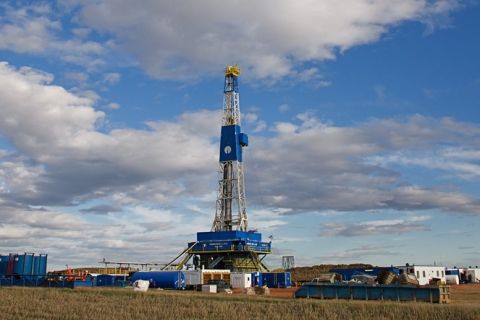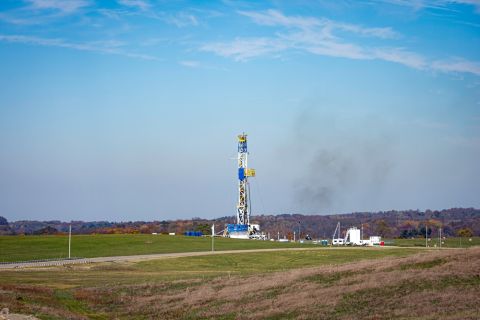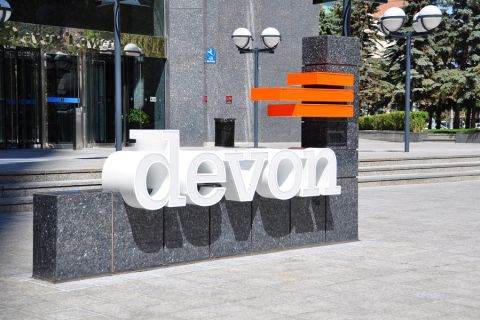Presented by:
Affordable sources of energy are vital in high-density computing, and when EZ Blockchain launched as a hosting provider in 2017, the company soon realized it needed to get off the grid to remain profitable. After all, proof of blockchain work—also known as crypto mining—is notoriously power-consuming, and electricity costs were devouring company profits.

That’s when EZ Blockchain founders developed an innovative approach: They looked to flared and stranded gas as an alternative energy source and haven’t looked back since.
“It was a big game changer,” Sergii Gerasymovych, chief executive and co-founder of EZ Blockchain, said. “It has become our main business … Instead of burning natural gas into the air, we’re doing useful work. We’re not only reducing emissions, but we’re helping companies meet regulatory rules, at the same time making some revenue for them, and we ourselves are off the grid. Multiple parties benefit from it.”
Wasted opportunity
Stranded gas that might otherwise have gone wasted more frequently is being used to power energy-intensive crypto mining. Some natural gas producers—particularly in Wyoming and North Dakota—are selling the product at the wellhead to companies such as EZ Blockchain, which uses it to produce cryptocurrency such as Bitcoin.
In 2018, EZ Blockchain developed a way to use flared gas by building generator-powered microgrids, which are about the size of a shipping container, to fuel its line of high-density computing modular data centers. The energy sector soon became EZ Blockchain’s key market.
The company established a team of inhouse engineers and developed a fully operational manufacturing line to supply mobile data centers on scale. It also developed a mobile flaring mitigation system, EZ Smartgrid, which can be used on oil pads to reduce flaring. The technology consists of an electric generator and a mobile data center filled with crypto mining equipment.
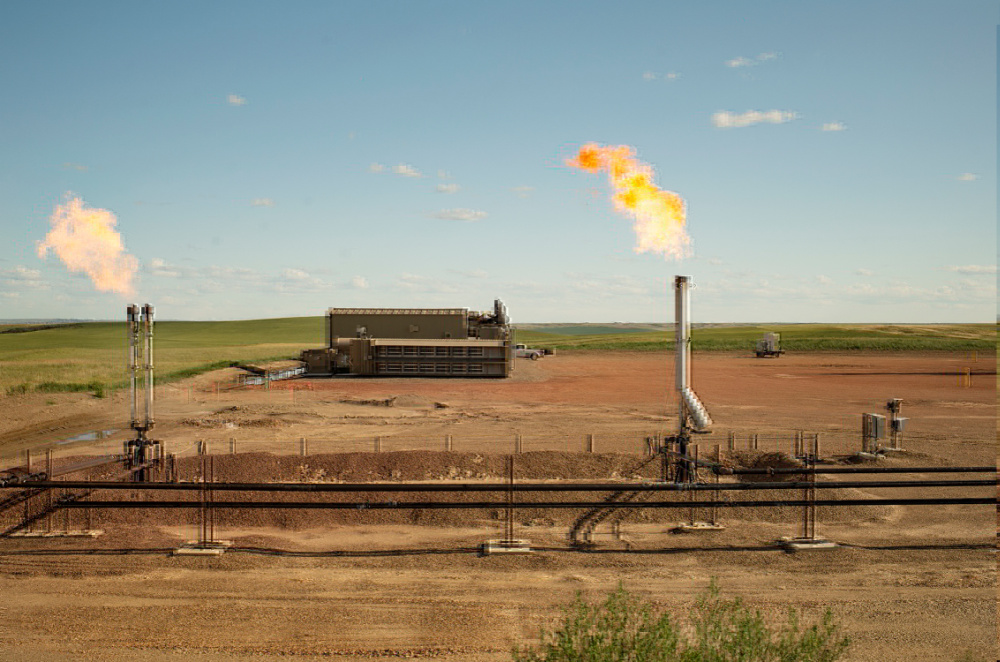
The strategy appears to be paying off: EZ Blockchain, since 2018, has grown from a team of five to a staff of about 50 employees. It has projects throughout the nation, with its presence heaviest in the Permian Basin and Marcellus Shale. In addition to its Chicago headquarters, the company recently opened a Houston office to support its oil and gas operations.
And as the company’s leader puts it, EZ Blockchain isn’t the only one that stands to profit from the technology.
“I think that every oil and gas producer who has natural gas assets should have this system on their field because it’s not only a system that helps them to mitigate flaring and resolve a gas problem, it is also a system that helps them to be hedged against the prices of natural gas,” Gerasymovych said.
“Let’s say the Bitcoin mining system makes more than $5 per Mcf, for example, and the price that they sell it [elsewhere] is at $2, then they can just mine Bitcoin. If the price on the midstream is higher than they would make from Bitcoin mining, they would just sell the gas. But if they would install the system in their field, they have another option because natural gas and oil owners are kind of at the mercy of midstream companies.”
Environmental payoff
Crusoe Energy Systems Inc. partners directly with operators to mitigate flaring at well sites by utilizing the natural gas that would otherwise be wasted. Crusoe pays for the stranded gas on a per thousand cubic feet (Mcf) basis, similar to typical gas purchase contracts, which establishes a basis for taxes and royalties.
Of course, capturing wasted energy and using it to power crypto mining also has tremendous environmental benefits. It’s no secret that flaring is a considerable source of methane emissions, and Crusoe’s Digital Flare Mitigation systems have achieved 99% combustion in its stack tests. Its approach helps reduce methane and CO₂ equivalent emissions. The company said it also deploys top-of-the-line catalyst technology into its systems to reduce nitrogen dioxide, carbon monoxide and volatile organic compound emissions.

“This catalytic conversion cleans the air of smog, delivering material air quality and human health benefits,” Crusoe president Cully Cavness said
Crusoe uses patented Digital Flare Mitigation systems to capture stranded gas, and the gas is diverted from a flare line to a generator designed specifically for rich gas. From there, the generator combusts gas to generate electricity, which is used to power onsite modular data centers.
“As the natural gas is fully combusted during this process, we are able to achieve a 98% reduction in methane emissions and a 63% reduction in carbon dioxide equivalent emissions compared to continued flaring as the status quo,” said Cavness.
“As Bitcoin mining became more mainstream, Crusoe developed Digital Flare Mitigation systems to provide E&Ps with a better environmental and economic solution than flaring and to provide the Bitcoin network with a superior energy supply in both environmental and economic terms,” he said.
Market comeback
Highwire Energy Partners LLC entered the cryptocurrency mining industry in 2020, around the time a pandemic-induced market crash pushed natural gas and oil prices into a downward spiral. Stuck at home during a lockdown, Highwire Energy president Kris Holbrook began brainstorming with his partners about how to prosper from the emerging cryptocurrency mining market.
The company soon purchased the necessary equipment and tested it on wells owned by partner Wayne Neumiller.
It shortly realized that while the market value for gas was $1 per Mcf, the company could earn about $8 per Mcf by using stranded gas to fuel crypto mining.
“It started from there and we built out, and it’s just really taken off,” Holbrook said. “What we are in search of is cheap energy, and we found it, basically, by creating energy. Flared gas was being vented and never used, and we want to harness that energy for Bitcoin mining.”
Highwire’s presence in the sector continued to build in January 2021 when it purchased leases on an orphaned South Dakota field that would have otherwise cost the state about $1 million to plug. The company began working on the field after partnering with a New York City private equity firm that shares its clean energy vision.
“Once you plug the well, that energy source is gone forever,” Holbrook said. “You’ll never be able to harness it. And now, we are going to produce that gas, and we’re going to pay taxes on it for the schools of South Dakota, which is a revenue stream that they were basically never going to have if they would have gone down a different route.”
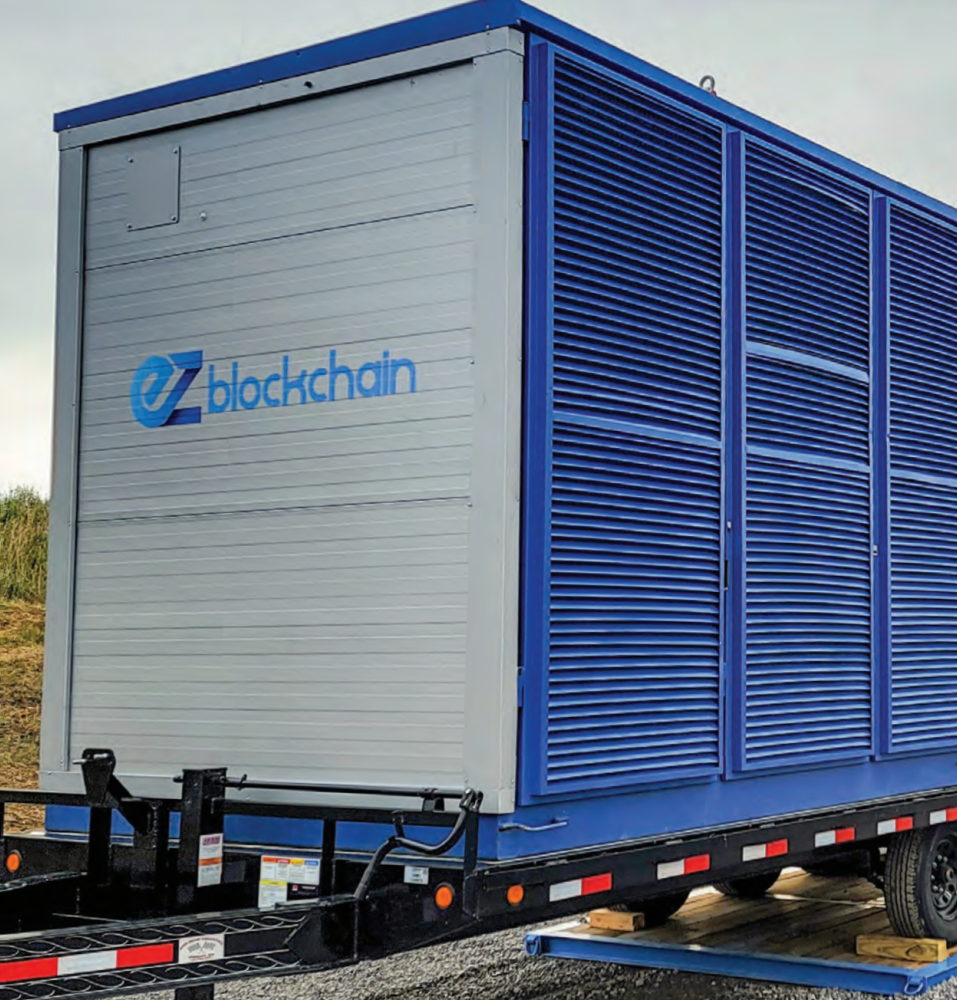
Sweetening the deal
In April, North Dakota passed Bill 2328, which provides operators with a credit for oil produced from a well site using an onsite flare mitigation system. It means operators can earn monthly credits of up to $6,000 per well by deploying Digital Flare Mitigation technology.
In Wyoming, a recently passed law removed taxes from projects that converted flared gas to cryptocurrency.
As incentives for utilizing stranded gas continue to grow, so too does Crusoe’s quest to reduce carbon emissions. The company plans to expand to the Permian Basin later this year and has an ESG mandate for its projects to be net neutral or net reducers of carbon emissions.
“This means Crusoe focuses on fields that primarily produce oil and have gas as a flared byproduct, not the primary product itself,” Cavness said. “Globally, about 90% of flaring happens outside the U.S., so our long-term vision is to provide Digital Flare Mitigation services on an international basis.”
A tough sell
When Gerasymovych’s team began its technological trailblazing, it was met with more critics than cheerleaders. Friends would laugh at the thought of cryptocurrency being a profitable venture, while others were reluctant to acknowledge the legitimacy of the sector. Perhaps most challenging was the ability to gain access to traditional financing.
The regulatory uncertainty surrounding cryptocurrency prevented banks from financially backing EZ Blockchain, forcing it to fund its operations upfront. The challenge was exacerbated during the pandemic, when oil and gas values plummeted, putting related investments in a more precarious position.
“Our business is very highly capital intensive, and most of the money that we need is for power generation assets like electric generators and turbines, and they cost a lot of money,” Gerasymovych said. “With a regular business, you would just go to the bank and finance a generator. For us, we have to buy it upfront with cash, which is making this more complicated because we cannot scale to the level we would want to. We constantly need to raise money to buy more power generators. That’s probably the biggest challenge.”
When Highwire initially launched, it too faced money troubles.
“To tell you the truth, when we first started, it was very hard,” Holbrook said, adding with a laugh: “A lot of people just kind of thought we were more or less snake oil salesmen. It was tough. But I can tell you in confidence, the very first investors that we had got their money back in the first six months and have given us more money since then.”
Since entering the market, things have gotten a little easier for companies seeking financing in the sector. There’s a great deal of money entering the space as investors began recognizing the need for clean cryptocurrency mining, Holbrook said.
“China shut down Bitcoin mining because it was such a strain on the grid,” he said. “We don’t put anything on the grid—everything is off the grid. We do not hurt communities or hurt people by putting strain on the grid. And so, that’s why our space is just blowing up.”
State regulations have presented another obstacle. In some states, it can be difficult to obtain a permit to install generators necessary to takeaway flared gas.
Crusoe has faced some challenges of its own, with many related to technical, commercial and operational difficulties related to company growth. Although it developed solutions to solve those operational challenges, it’s grappling with a new obstacle as it expands into the Permian Basin.
“Bitcoin mining computers, called ASICs, do not like hot weather. This is a challenge in lower latitudes and desert regions such as West Texas and New Mexico. As a result, Crusoe has developed cooling solutions to keep ASICs cool and dust-free in challenging conditions, and we are excited to begin rolling these new systems out over the next year.”
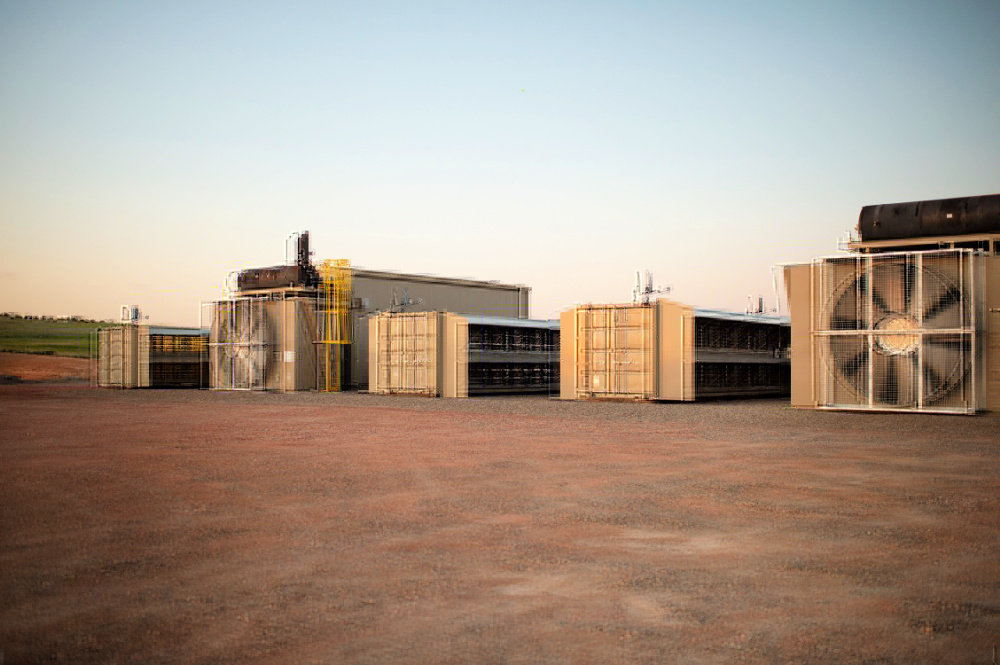
Powering up
Flared natural gas isn’t the only way to power cryptocurrency mining, but advocates such as Gerasymovych believe it’s the best option. Although solar or wind sources could also be used, he said they’re less reliable.
“Solar can provide power for only seven hours a day, and the wind is very intermittent, very limited,” he said. “We have thought about putting some projects on wind. However, by doing that, we are not solving any type of problem. We’re just using power, [and] it’s against our values. We really want to solve the problem, which is wasted energy from leaking gas. We’re using power which otherwise would be either burned or it’s never been created, and that’s probably the biggest advantage here.”
A new way to pay
While some critics have expressed skepticism of cryptocurrency being a lasting phenomenon, Gerasymovych believes it’s here to stay.
“Bitcoin is usually called digital gold because it actually has the same features as gold. It has the scarce supply, it has mining, so you need to spend a lot of effort to get one Bitcoin,” he said.
“And also, the more you mine Bitcoin, the less Bitcoin is left. That being said, Bitcoin has another feature that gold doesn’t have: it’s very easy to store, and it’s easy to transfer, which is the biggest feature of Bitcoin. You can send $1 billion from one wallet to another and just pay $10, and it’s very simple.”
Recommended Reading
Williston Warriors: Enerplus’ Long Bakken Run Ends in $4B Chord Deal
2024-02-22 - Chord Energy and Enerplus are combining to create an $11 billion Williston Basin operator. The deal ends a long run in the Bakken for Enerplus, which bet on the emerging horizontal shale play in Montana nearly two decades ago.
Chord Buying Enerplus to Create a Bakken Behemoth
2024-02-22 - Chord Energy said Feb. 21 it will acquire Enerplus Corp. for nearly $4 billion in a stock-and-cash deal to potentially create the largest producer in the Williston Basin.
Ohio Oil, Appalachia Gas Plays Ripe for Consolidation
2024-04-09 - With buyers “starved” for top-tier natural gas assets, Appalachia could become a dealmaking hotspot in the coming years. Operators, analysts and investors are also closely watching what comes out of the ground in the Ohio Utica oil fairway.
Report: Devon Energy Targeting Bakken E&P Enerplus for Acquisition
2024-02-08 - The acquisition of Enerplus by Devon would more than double the company’s third-quarter 2023 Williston Basin production.
Chesapeake-Southwestern Deal Delayed Amid Feds Scrutiny of E&P M&A
2024-04-05 - The Federal Trade Commission asked Chesapeake and Southwestern for more information about their $7.4 billion merger — triggering an automatic 30-day waiting period as the agency intensifies scrutiny of E&P deals.


